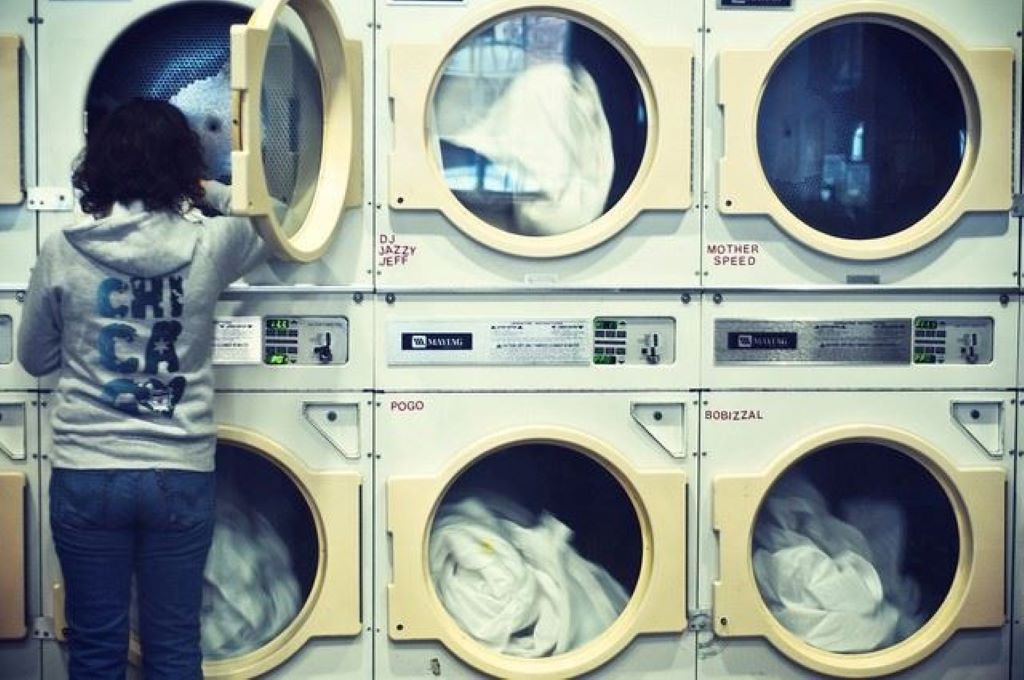The clothes dryer has become such an essential appliance in modern homes that it’s hard to imagine life without it. However, the journey from wet laundry hanging on clotheslines to the convenient machines we use today tells a fascinating story of innovation and necessity. Whether you’re shopping for appliances from Styline Collection or simply curious about household history, understanding the evolution of this everyday device reveals surprising insights about human ingenuity.
Most people assume the electric dryer appeared alongside other major household appliances in the mid-20th century. Nevertheless, the actual timeline of dryer development stretches back much further than expected. The quest to mechanize the drying process began during the Industrial Revolution, when inventors recognized the potential for automating this time-consuming household chore.
The Early Origins: More Than a Century Ago
The story of when was the dryer invented begins in 1892, much earlier than most people realize. George T. Sampson, an African American inventor, received the first patent for an electric clothes dryer on June 7, 1892. His innovative design featured a rack suspended over a stove, allowing heated air to circulate around wet garments.
Sampson’s invention represented a significant leap forward from traditional drying methods. Before this breakthrough, people relied entirely on outdoor clotheslines, indoor drying racks, or simply hanging clothes near fireplaces. These methods were weather-dependent and often inefficient, especially during winter months or rainy seasons.
The original patent described a wooden frame with multiple rails where clothes could be hung. Additionally, the design included a heat source positioned below the rack, creating an updraft of warm air. This simple yet effective concept laid the groundwork for all future dryer innovations.
Evolution Through the Decades
Following Sampson’s pioneering work, several inventors contributed improvements to the basic dryer concept. However, early models remained impractical for widespread home use due to safety concerns and limited effectiveness.
The early 1900s saw gradual refinements to dryer technology. Furthermore, manufacturers began experimenting with different heating methods and ventilation systems. These experiments led to more sophisticated designs that could handle larger loads and operate more safely.
By the 1930s, electric dryers started appearing in some American homes, though they remained luxury items. The machines were expensive, required special electrical installations, and worked slowly compared to modern standards. Therefore, most families continued using traditional drying methods well into the mid-20th century.
The Post-War Boom and Mass Adoption
World War II marked a turning point for household appliances, including clothes dryers. Wartime technological advances and post-war prosperity created ideal conditions for appliance innovation and mass production.
The 1940s and 1950s witnessed dramatic improvements in dryer design and functionality. Manufacturers developed more efficient heating elements, better drum designs, and improved safety features. Consequently, dryers became more affordable and practical for average American families.
Suburban expansion during this period also contributed to dryer popularity. New housing developments often lacked adequate outdoor space for clotheslines, making mechanical drying solutions more appealing. Additionally, the rise of consumer culture encouraged families to invest in labor-saving devices.
Technological Breakthroughs That Changed Everything
The introduction of automatic temperature controls revolutionized dryer performance during the 1950s. These systems prevented overheating and fabric damage, addressing major concerns that had limited earlier adoption.
Meanwhile, manufacturers developed different heat sources to meet various consumer needs. Gas-powered dryers offered faster drying times and lower operating costs in areas with natural gas service. Electric models provided easier installation and consistent performance where electrical infrastructure was more reliable.
Ventilation improvements also played a crucial role in dryer evolution. Better exhaust systems removed moisture more effectively, reducing drying times and preventing humidity buildup in homes. These advances made dryers safer and more efficient than ever before.
The Surprising Role of Commercial Laundromats
Commercial laundromats significantly influenced residential dryer development. These businesses needed durable, high-capacity machines that could operate continuously with minimal maintenance.
The demands of commercial use drove innovations that eventually benefited home users. Heavy-duty components, improved reliability, and more efficient designs first appeared in commercial settings before being adapted for residential use.
Furthermore, laundromats introduced many consumers to the convenience of machine drying. People who experienced the time-saving benefits at laundromats often decided to purchase dryers for their homes when prices became more reasonable.
Regional Differences and Cultural Factors
Dryer adoption varied significantly across different regions and cultures. Northern climates with harsh winters embraced the technology faster than areas with year-round suitable drying weather.
Economic factors also influenced adoption patterns. Regions with higher electricity costs sometimes favored gas dryers or continued using traditional methods longer. Cultural attitudes toward new technology and changing gender roles also affected how quickly families adopted dryers.
International variations proved particularly interesting. European countries often developed more energy-efficient models due to higher energy costs, while American manufacturers focused on capacity and convenience features.
Modern Innovations and Future Trends
Today’s dryers incorporate sophisticated technologies that early inventors could never have imagined. Moisture sensors automatically adjust drying times, while steam cycles refresh clothes and reduce wrinkles. Energy-efficient models use heat pump technology to reduce environmental impact.
Smart connectivity allows users to monitor and control dryers remotely through smartphone apps. These features represent the latest evolution in the long journey from Sampson’s simple heated rack to today’s intelligent appliances.
Looking ahead, manufacturers continue developing more sustainable and efficient drying technologies. Solar-powered dryers, improved heat pump systems, and advanced materials promise to make future models even more environmentally friendly and cost-effective.
Economic Impact and Industry Growth
The dryer industry has grown into a multi-billion dollar market since its humble beginnings. This growth has created thousands of jobs in manufacturing, sales, service, and related industries.
Moreover, the widespread adoption of dryers has had broader economic effects. Reduced time spent on laundry has allowed more people, particularly women, to enter the workforce. This shift contributed significantly to changing social and economic patterns throughout the mid-20th century.
The appliance industry’s success with dryers also paved the way for other household innovations. Manufacturers applied similar approaches to developing dishwashers, garbage disposals, and other labor-saving devices.
Frequently Asked Questions
Who invented the first clothes dryer? George T. Sampson invented the first electric clothes dryer in 1892. He received a patent for his design on June 7, 1892, featuring a rack system positioned over a heat source.
When did dryers become common in homes? Dryers became widely adopted in American homes during the 1950s and 1960s. The post-war economic boom, suburban expansion, and improved technology made them more affordable and practical for average families.
What was used before clothes dryers were invented? Before dryers, people used outdoor clotheslines, indoor drying racks, or hung clothes near fireplaces or stoves. These methods were weather-dependent and often time-consuming, especially during winter or rainy periods.
How did early dryers work? Early dryers used simple heated air circulation. Sampson’s original design featured a wooden rack suspended over a stove, allowing warm air to rise and dry the hanging clothes. Later models incorporated electric heating elements and basic ventilation systems.
What major improvements made dryers more popular? Key improvements included automatic temperature controls, better ventilation systems, more efficient heating elements, and safety features. These advances made dryers faster, safer, and more convenient, leading to widespread adoption in the 1950s.
Conclusion
The history of clothes dryer invention reveals a fascinating journey spanning more than 130 years. From George T. Sampson’s pioneering 1892 patent to today’s smart, energy-efficient models, each generation of inventors has contributed to making laundry easier and more convenient.
Understanding this evolution helps us appreciate how seemingly simple appliances represent decades of innovation and refinement. The dryer’s development also reflects broader social and economic changes, from post-war prosperity to changing gender roles and environmental consciousness.
As we look to the future, the principles established by early inventors continue guiding new innovations. Therefore, the next chapter in dryer history will likely focus on sustainability, connectivity, and efficiency, ensuring this essential appliance continues serving families for generations to come.
Read More:
BEST HOME PRINTER FOR GRAPHIC DESIGN STUDENTS



